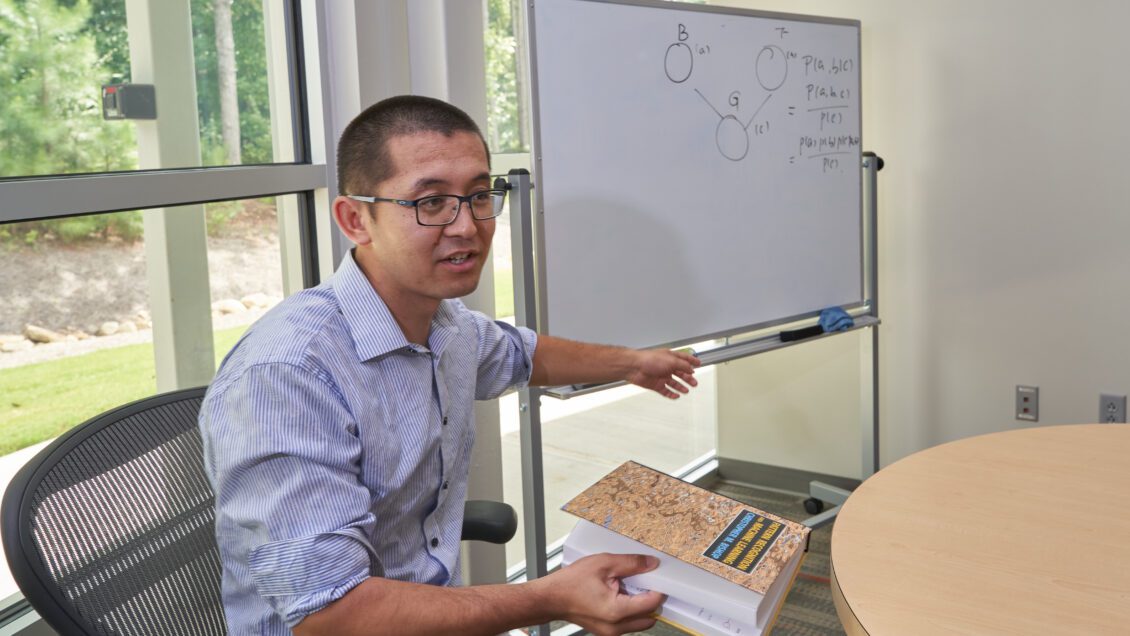Two people are prescribed the same drug to treat similar ailments. One patient quickly recovers, while the other realizes no real benefit from the course of treatment.
Why the same drug does not always produce the same result for different patients is part of what Clemson University researchers are trying to discover in the realm of precision medicine.
Zhana Duren, an assistant professor in the Department of Genetics and Biochemistry, is delving into the genetic makeup of people to unlock the answer to this and other questions. He has co-authored a paper on the topic with postdoctoral fellow Qiuyue Yuan. Both Duren and Yuan are at the Clemson University Center for Human Genetics in Greenwood, South Carolina.

Novel approach
The researchers are using a novel approach by applying two relatively new tools — big data and artificial intelligence — to better understand the workings of gene-regulatory networks (GRNs), which are like roadmaps that show how genes, proteins and other substances interact uniquely from person to person.
GRNs “map the complex interactions between genes, regulatory elements and proteins, holding the key to understanding how genetic variations influence phenotype like drug response,” Duren explained. “Each individual possesses a unique GRN shaped by their specific genotype, explaining why the same drug can elicit different responses in different people.”
To interpret individual genetic variants within the context of unique GRNs, “we aim to answer critical questions, (such as) how and why do genetic variants influence individual phenotypes through intricate GRN interactions,” Duren said. “By elucidating these mechanisms, we pave the way for predicting drug response based on personal genetics, enabling the development of more-targeted therapies and minimizing ineffective treatments.”
The problem facing the researchers, according to Duren, is that “most genetic variants linked to diseases are hidden in areas of our DNA that don’t directly code for proteins. This makes it tricky to understand how they impact our health.”
Turned to AI
To help solve the riddle, Duren and Yuan turned to AI and big data analytics. They developed LINGER – Lifelong Neural Network for Gene Regulation — a novel deep learning-based method to infer GRNs from other cellular-level data.
With the help of the new tools, Duren and Yuan made discoveries that promise to more accurately predict how GRNs work.
“There are many methods developed for gene regulatory network inference in the past two decades,” Duren noted. “However, our systematic benchmarking based on experimental data shows that the accuracies of these existing methods are about 17% to 29% higher than the random predictor. The new method increases it to 125% higher than the random predictor, showing four- to seven-fold relative increase.
“Since this is a significant improvement in fundamental research, it will have the potential to lead discovery in broad biomedical research fields,” he added.
The gains the two reported did not come without a variety of challenges. Chief among those was data sparsity.
“Because it is single-cell data, the number of observations we get at each cell is so limited,” Duren said. “The gene regulatory network is such a complex problem that it requires large amounts of data to learn. But the available independent data — we have data from many single cells, but they are not independent — is not enough for this task.”
Potential applications
The research has potential applications in a number of fields, according to Duren, including molecular biology, developmental biology and medical health research. Duren also noted the research’s potential for adding to the understanding of drug addiction, which could make it possible to develop more effective treatments.
“Currently, we are applying this method in the field of drug addiction,” he noted. “I have three collaborations working on that; one is applying this” to cocaine addiction.
The team’s research was made possible in part through two National Institutes of Health grants for $2.2 million, which were awarded in 2023 and 2024, respectively.
The paper, “Inferring gene regulatory networks from single-cell multiome data using Atlas-Scale External Data,” was published by the peer-reviewed top journal Nature Biotechnology.
Get in touch and we will connect you with the author or another expert.
Or email us at news@clemson.edu

